#historical house
Photo
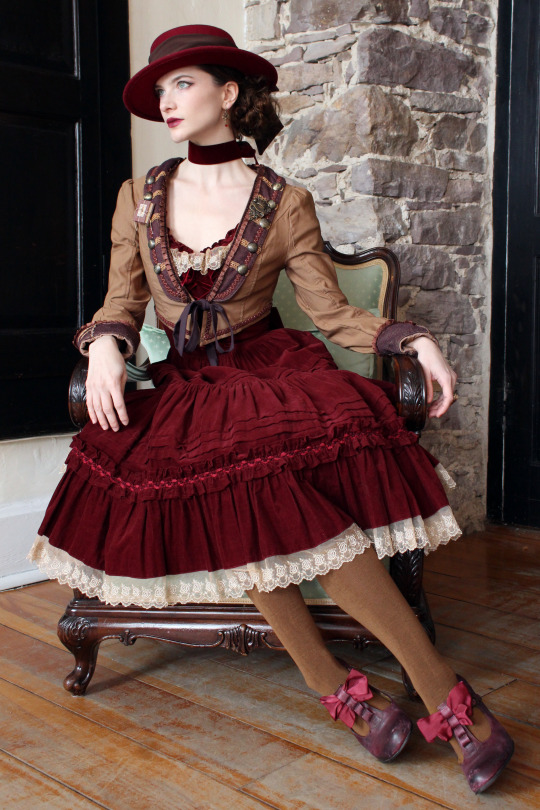


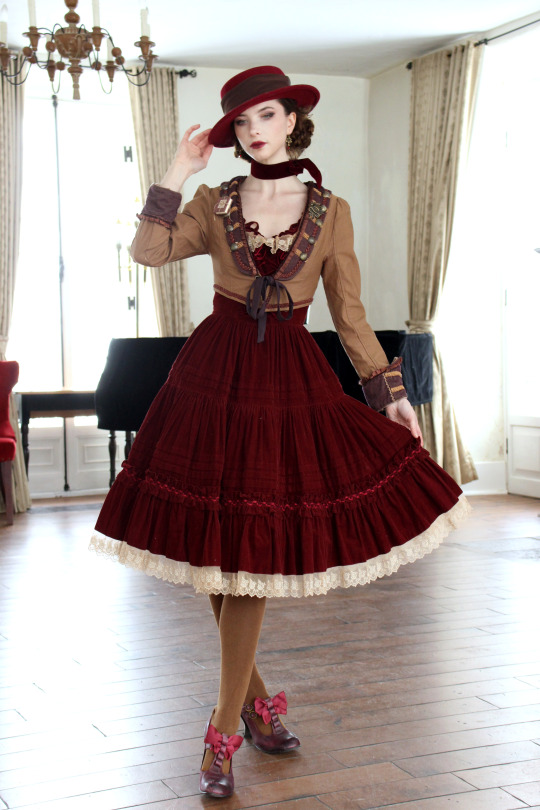
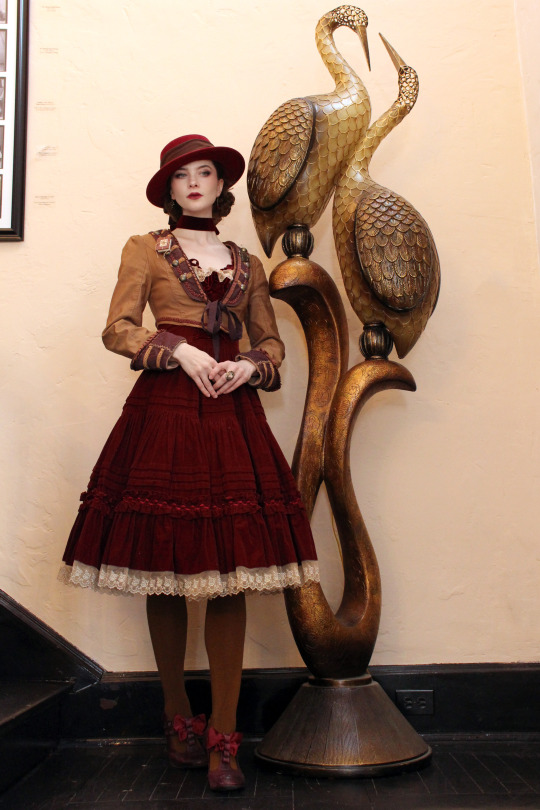


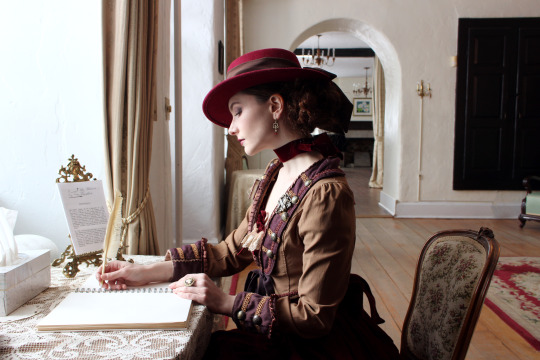
La Maréchale
Outfit rundown
Dress: second-best Mary Magdalene
Jacket: second-hand Ozz Angelo
Shoes: old Fluevog
Hat: old Amavel
Earrings: old Dracolite
Ring: vintage
Book brooch: Design Festa
#fashion#egl#historybounding#lolitafashion#classiclolita#vintage#vintage style#vintage fashion#historical house#antique decor#antique#mary magdalene#long hairstyles#alternative fashion#jfashion#maison trestler#fantasycore#royalcore#second-hand fashion#militarylolita#fanny rosie#fannyrosie#morgane
707 notes
·
View notes
Text

'It will be an odd life, but…it ought to be a good one for painting,' the artist Vanessa Bell said of Charleston, the Sussex farmhouse that in 1916 became a focal point for the Bloomsbury Group; that amorphous circle of writers, intellectuals and artists who lived and worked in Bloomsbury before the First World War and beyond.
Artist Vanessa Bell married art critic Clive Bell in 1907 and they had two sons, Julian (who died in 1937 during the Spanish Civil War at the age of 29 and Quentin (the artist and potter). The couple had an open marriage, both taking lovers throughout their lives. Bell had affairs with art critic Roger Fry and with the painter Duncan Grant, with whom she had a daughter, Angelica in 1918, whom Clive Bell raised as his own child.
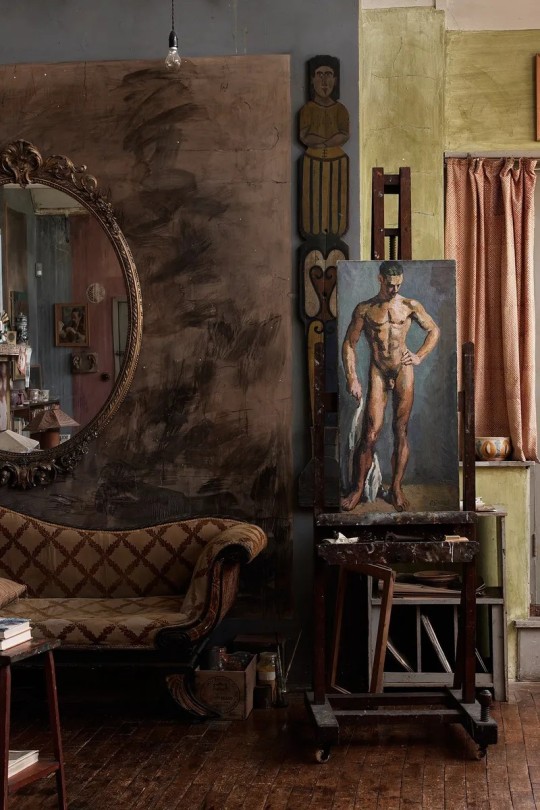
Over the years, Charleston Farmhouse was home to not only Vanessa Bell, Duncan Grant, and their family but to their extended family, their friends, and their lovers.
In 1916, Vanessa Bell and Duncan Grant moved to the Charleston Farmhouse in Sussex. Living at the house along with Bell and Grant were her two sons Julian and Quentin and Grant’s friends and lover David Garnett. Due to both Grant and Garnett being conscientious objectors of the First World War, they needed to find work on a farm otherwise they would have gone to prison. Grant and Garnett were able to find work on a farm near the Charleston Farmhouse, so that is why they chose that location to live.

Almost as soon as Vanessa and Duncan moved into Charleston, they began to paint, not just on canvas, but over every available surface - walls, of course, but also tables, chairs, bedheads and bookcases; all glowed with swirls and spirals of colour and pattern, full of life and vitality, that was as far from the conservative, conventional interior decoration of the time as it was possible to be.
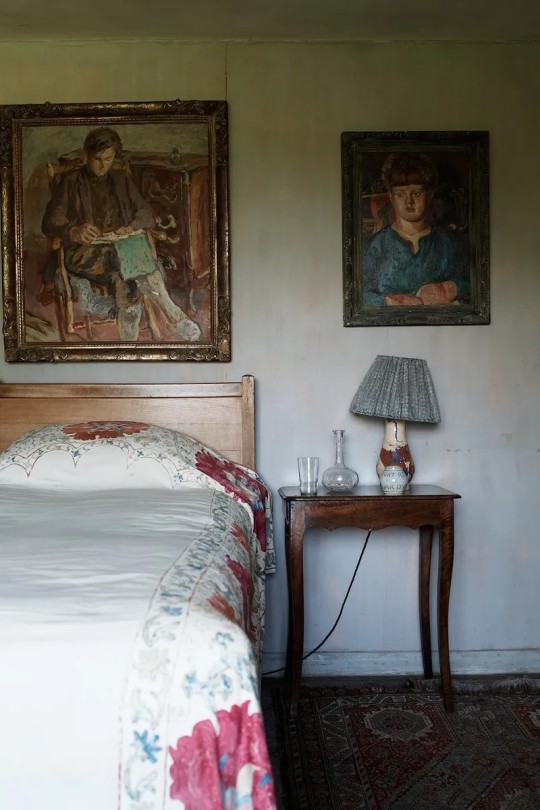
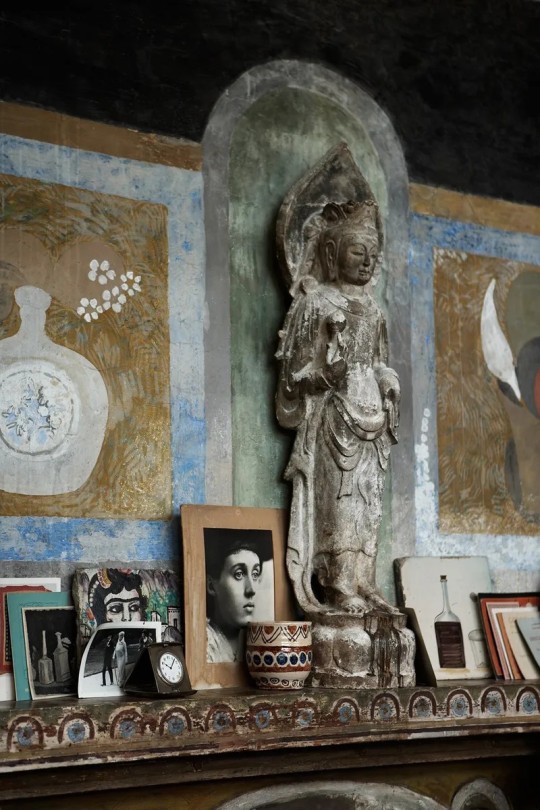
The writer Dorothy Parker is said to have quipped that the 'Bloomsbury paints in circles, lives in squares and loves in triangles.' A perfect summation when attempting to describe the beyond complicated living situation of Charleston's custodians.

'The house seems full of young people in very high spirits, laughing a great deal at their own jokes...lying about in the garden which is simply a dithering blaze of flowers and butterflies and apples,' wrote Vanessa in 1936. Indeed over the next sixty years the house would become a magnet for the intellectual avant-garde.
Sources: houseandgarden.co.uk, Wikipedia
Photo credit: Paul Massey
#bloomsbury group#vanessa bell#charleston house#clive bell#duncan grant#bohemian life#painters#artists#intellectual life#england#art history#historical house#artists' house#painting#early to mid 1900s#art#20th century art#bohemian lifestyle
48 notes
·
View notes
Text


The Bishop’s Palace, Galveston TX
#pics by me :D#more of these incoming#home decor#interior design#victorian era#victorian style#maximalism#tile#maximalist decor#bathroom inspo#room inspo#Victorian home#cottagecore#antique#antique aesthetic#late 1800s#1800s#historical house#galveston#the bishops palace
74 notes
·
View notes
Note
so this is fairly random, but i’m curious to know if you’ve ever heard of/been to the driehouse museum in chicago? it’s a preserved/restored home from the guilded age, and it’s genuinely one of the most beautiful places i’ve ever seen—i would highly recommend looking it up online! i visited it today (and almost cried at how stunning some of the architectural features were, haha) and thought it seemed like something you would appreciate.
I looked it up. Ye. Gods.
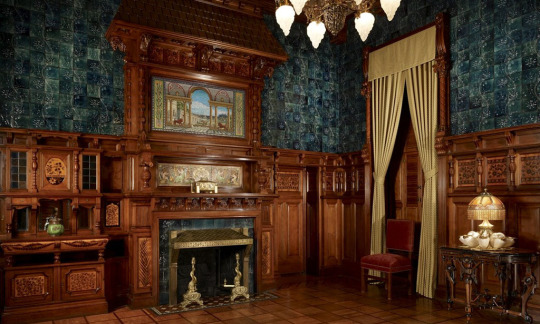

Next time I'm in Chicago...
123 notes
·
View notes
Photo





林安泰古厝
39 notes
·
View notes
Text
I made social media accounts for sharing my journey fixing up an old Victorian house I bought for $100
If anyone would like to help fund this restoration project or if you could share this and get it out there I’d appreciate it.
This house is about 170 years old give or take a decade, truthfully it’s estimated to have been built between the 1830’s-1850’s. I want to see her make it to see 200 and many more years to come.
Historical homes and architecture; the restoration and preservation of historical homes are some of my passions. Historic homes being a particular special interest. This is my lifelong dream.
All donations will go towards the restoration and preservation of this beautiful historic Victorian home. The roof and foundation need repaired and the electrical needs to be updated (it’s still on knob and tube!). Anything extra will go toward redoing the bathrooms and kitchen which were already gutted before I purchased this house, as well as rebuilding the collapsed back porch. The back porch hasn’t collapsed because of any structural or foundational issues (all foundation issues are in the front corner of the house exclusively), it’s just collapsed due to wood rot.
Here are the links for anyone interested in following this journey.

#history#historic architecture#historic preservation#historical#historical house#historic house#historic home#fixer upper#house#houses#historic houses#victorian#victorian home#victorian house#victorian history#house repair#house renovation#house restoration#home renovation#home restoration#budget house#home repair#house remodeling#special interest#boost#fundraising#queer#actually autistic#actually disabled#actually adhd
18 notes
·
View notes
Text
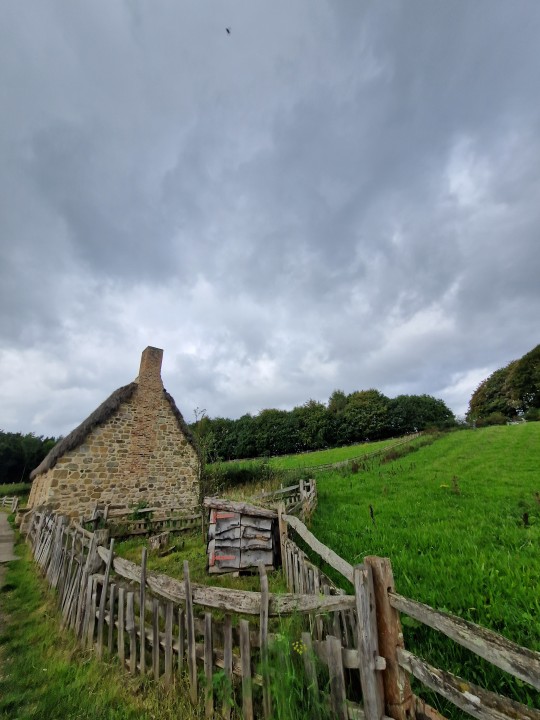
#my photos#photography#travel#united kingdom#Beamish Living Museum#Thatch Roof#Thatch House#Historical town#historical house#history#Fields#Nature#Autumn#Autumnal#cottage core#witch core
7 notes
·
View notes
Text



“A little further, the Haze house, a white-frame horror, appeared, looking dingy and old, more gray than white—the kind of place you know will have a rubber tube affixable to the tub faucet in lieu of shower.” — Lolita by Vladimir Nabokov 🏡🤍
🍒 Instagram 🍒
🫐 Twitter 🫐
#dolores haze#lolita 1997#lolita the book#vladimir nabokov#nymphetfashion#plus size fashion#fatshion#cosplay#doelette#doelet#dollette#nymphett#fat nymphett#cute fashion#cute aesthetic#vintage aesthetic#vintage style#historical house#fashion#fashion style#loleetah#loleeta#plus size#bookworm#long island#fat positive#body positive
17 notes
·
View notes
Text
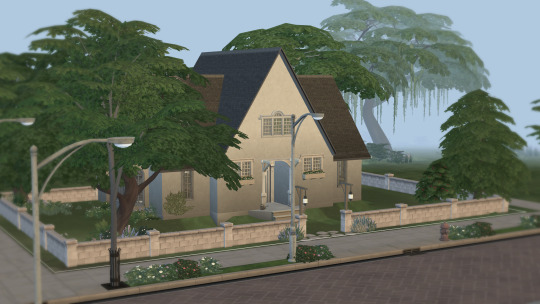



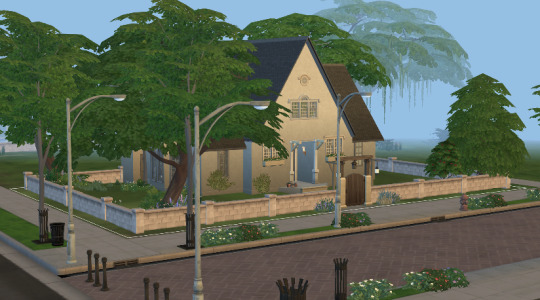
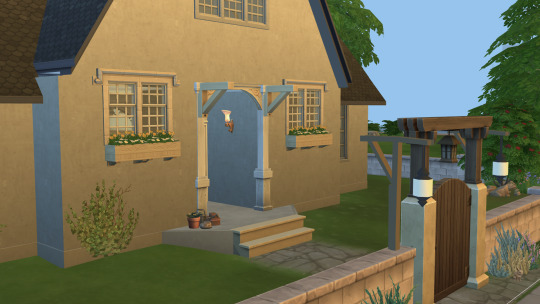
Plave V. The Bailiff's Cottage
So proud of my laste's house.
#ts4#ts4 gameplay#the sims 4#sims 4#regency architecture#historical house#cottagecore#John Papworth#John B Papworth#georgian architecture
2 notes
·
View notes
Text
REVIEW: Jackson County Historical Society - Young Historian Passport Program [History Tour]
A Youth Program Sponsored by the Jackson County Historical Society in Missouri
In 2022, my son and I jumped onto the opportunity of being in the first handful of participants of the Jackson County Historical Society Young Historians program. As an educational program, it’s a cool idea. With museums always wanting more participation, and most children’s tendency to love “gamifying” things and…

View On WordPress
#children&039;s activities#education#educational#Historical#Historical House#Historical Site#History#History Boy Summer#History Tour#Independence#Independence Mo#Jackson County#kansas city#Kansas City Missouri#KCMO#missouri#museum#Museum Trips#Museums#National World War I Museum and Memorial
0 notes
Text

1845 addition, 2016
#original photography on tumblr#instant photography#instax#my photos#photography#photos#victorian house#victorian home#1840s#1845#historical house
0 notes
Photo





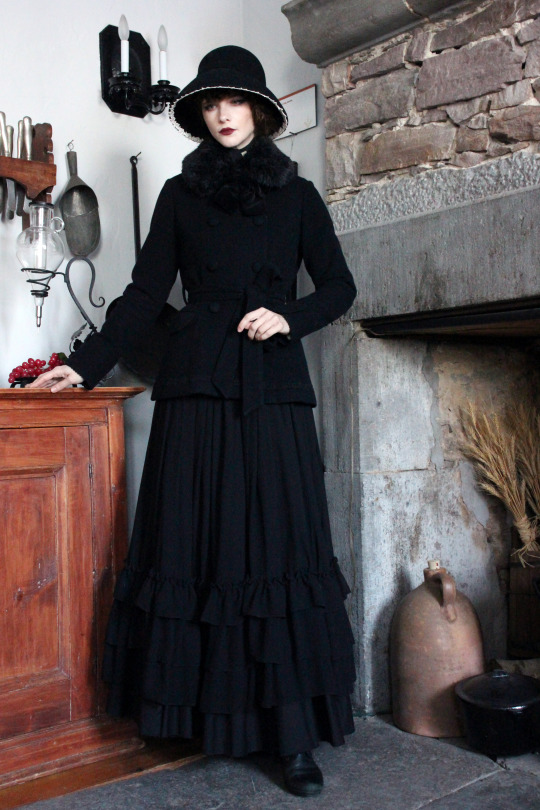

La dame en noir de la Maison Trestler
Outfit rundown
Coat: second-hand Mary Magdalene
Cape: old Parkhurst
Bonnet: Moi-même-Moitié (gift)
Overskirt: old The Floral Notebook (dead indie brand)
Underskirt: second-hand Black Peace Now (also rip)
Boots: old Cobb Hill (also rip)
#fashion#ega#goth#gothic fashion#gothic style#goth fashion#goth style#jfashion#vintage style#vintage fashion#historybounding#historical house#mary magdalene#black peace now#moi-même-moitié#moi-meme-moitie#old architecture#fashion photography#goth makeup#makeup#long hairstyles#maison trestler#winter fashion#second-hand fashion#fanny rosie#fannyrosie
923 notes
·
View notes
Text
4 Bedroom Historical House
The Gruyere is a scenic and gorgeous landscape, located on the countryside of Fribourg. The region is, although very scenic, it has been completely protected from mass tourism. It is famous for it's milk products, e.g.
0 notes
Text

all RIGHT:
Why You're Writing Medieval (and Medieval-Coded) Women Wrong: A RANT
(Or, For the Love of God, People, Stop Pretending Victorian Style Gender Roles Applied to All of History)
This is a problem I see alllll over the place - I'll be reading a medieval-coded book and the women will be told they aren't allowed to fight or learn or work, that they are only supposed to get married, keep house and have babies, &c &c.
If I point this out ppl will be like "yes but there was misogyny back then! women were treated terribly!" and OK. Stop right there.
By & large, what we as a culture think of as misogyny & patriarchy is the expression prevalent in Victorian times - not medieval. (And NO, this is not me blaming Victorians for their theme park version of "medieval history". This is me blaming 21st century people for being ignorant & refusing to do their homework).
Yes, there was misogyny in medieval times, but 1) in many ways it was actually markedly less severe than Victorian misogyny, tyvm - and 2) it was of a quite different type. (Disclaimer: I am speaking specifically of Frankish, Western European medieval women rather than those in other parts of the world. This applies to a lesser extent in Byzantium and I am still learning about women in the medieval Islamic world.)
So, here are the 2 vital things to remember about women when writing medieval or medieval-coded societies
FIRST. Where in Victorian times the primary axes of prejudice were gender and race - so that a male labourer had more rights than a female of the higher classes, and a middle class white man would be treated with more respect than an African or Indian dignitary - In medieval times, the primary axis of prejudice was, overwhelmingly, class. Thus, Frankish crusader knights arguably felt more solidarity with their Muslim opponents of knightly status, than they did their own peasants. Faith and age were also medieval axes of prejudice - children and young people were exploited ruthlessly, sent into war or marriage at 15 (boys) or 12 (girls). Gender was less important.
What this meant was that a medieval woman could expect - indeed demand - to be treated more or less the same way the men of her class were. Where no ancient legal obstacle existed, such as Salic law, a king's daughter could and did expect to rule, even after marriage.
Women of the knightly class could & did arm & fight - something that required a MASSIVE outlay of money, which was obviously at their discretion & disposal. See: Sichelgaita, Isabel de Conches, the unnamed women fighting in armour as knights during the Third Crusade, as recorded by Muslim chroniclers.
Tolkien's Eowyn is a great example of this medieval attitude to class trumping race: complaining that she's being told not to fight, she stresses her class: "I am of the house of Eorl & not a serving woman". She claims her rights, not as a woman, but as a member of the warrior class and the ruling family. Similarly in Renaissance Venice a doge protested the practice which saw 80% of noble women locked into convents for life: if these had been men they would have been "born to command & govern the world". Their class ought to have exempted them from discrimination on the basis of sex.
So, tip #1 for writing medieval women: remember that their class always outweighed their gender. They might be subordinate to the men within their own class, but not to those below.
SECOND. Whereas Victorians saw women's highest calling as marriage & children - the "angel in the house" ennobling & improving their men on a spiritual but rarely practical level - Medievals by contrast prized virginity/celibacy above marriage, seeing it as a way for women to transcend their sex. Often as nuns, saints, mystics; sometimes as warriors, queens, & ladies; always as businesswomen & merchants, women could & did forge their own paths in life
When Elizabeth I claimed to have "the heart & stomach of a king" & adopted the persona of the virgin queen, this was the norm she appealed to. Women could do things; they just had to prove they were Not Like Other Girls. By Elizabeth's time things were already changing: it was the Reformation that switched the ideal to marriage, & the Enlightenment that divorced femininity from reason, aggression & public life.
For more on this topic, read Katherine Hager's article "Endowed With Manly Courage: Medieval Perceptions of Women in Combat" on women who transcended gender to occupy a liminal space as warrior/virgin/saint.
So, tip #2: remember that for medieval women, wife and mother wasn't the ideal, virgin saint was the ideal. By proving yourself "not like other girls" you could gain significant autonomy & freedom.
Finally a bonus tip: if writing about medieval women, be sure to read writing on women's issues from the time so as to understand the terms in which these women spoke about & defended their ambitions. Start with Christine de Pisan.
I learned all this doing the reading for WATCHERS OF OUTREMER, my series of historical fantasy novels set in the medieval crusader states, which were dominated by strong medieval women! Book 5, THE HOUSE OF MOURNING (forthcoming 2023) will focus, to a greater extent than any other novel I've ever yet read or written, on the experience of women during the crusades - as warriors, captives, and political leaders. I can't wait to share it with you all!
#watchers of outremer#medieval history#the lady of kingdoms#the house of mourning#writing#writing fantasy#female characters#medieval women#eowyn#the lord of the rings#lotr#history#historical fiction#fantasy#writing tip#writing advice
29K notes
·
View notes
Text
Adagio
2022
Proposal for the intervention of a historical house in Downtown Guadalajara.
The idea was to find a new use that could be adapted to the house to preserve the original architecture whilst including new architectural elements.

0 notes
Text
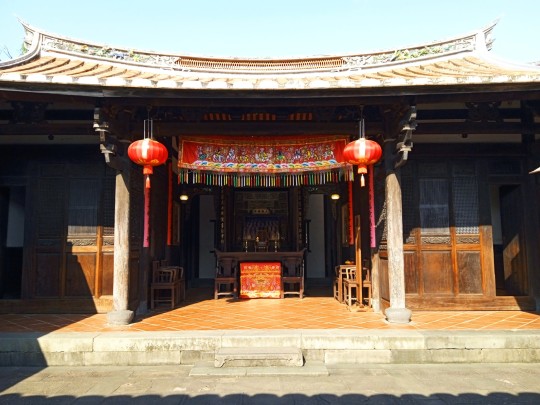

林安泰古厝 / Lin An Tai Historical House
13 notes
·
View notes